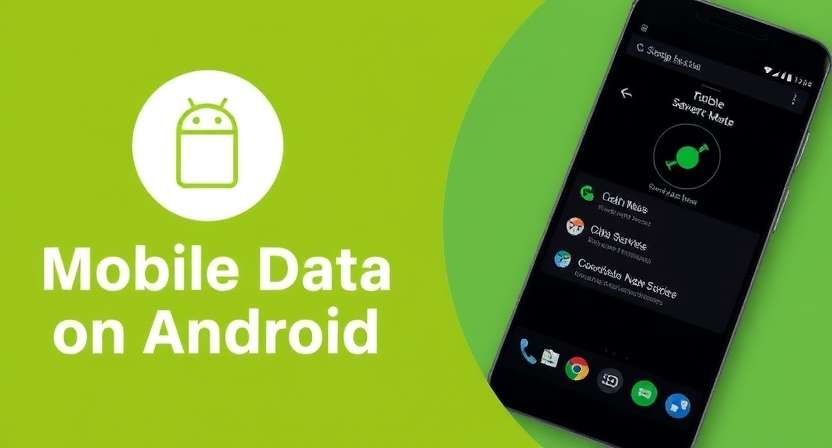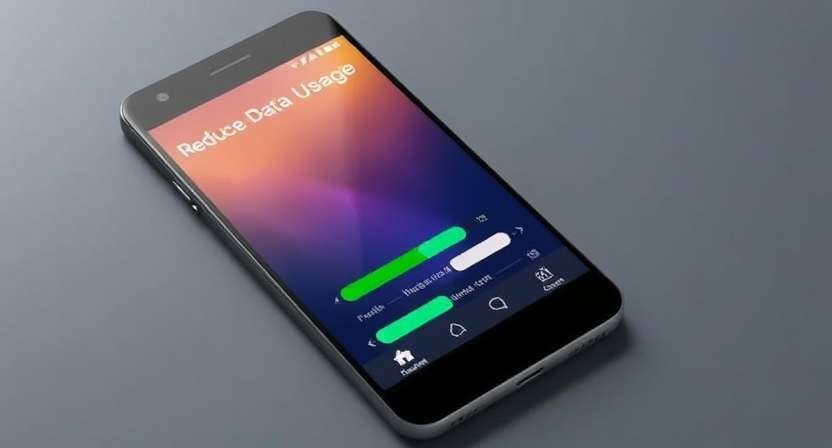In today’s fast-paced world, mobile data is more essential than ever. From browsing social media to streaming videos, data consumption on Android devices can quickly spiral out of control. Have you ever noticed how your mobile data can disappear seemingly overnight? You’re not alone. With apps constantly running in the background and content streaming automatically, it’s easy to lose track of your data usage.
But what if you could stop this from happening? Imagine being able to save mobile data without sacrificing your online experience. Well, you can! With the right tools and settings on your Android device, you can drastically reduce your data consumption. Whether you're looking to save data during your daily commute or want to keep your mobile plan costs in check, this guide is for you.
Let’s dive in and discover how to save data on Android, activate Data Saver Mode, and apply other effective strategies to keep your data usage under control.
Understanding Mobile Data Usage
Before we jump into the solutions, it’s essential to understand what’s eating up your mobile data. Do you know how your Android device uses data? Every app you use, from social media to email, consumes a certain amount of data. But the real culprit is often the apps running in the background, syncing and refreshing without you even knowing.
- Social Media Apps: These apps constantly update feeds, download media, and sync data without you having to do anything.
- Video Streaming: Watching videos on platforms like YouTube or Netflix can consume significant data, especially if you watch in high resolution.
- Automatic Updates: Apps updating in the background can eat up your data, sometimes without you even realizing it.
The goal is to minimize these invisible data drains and take charge of how and when apps access your data. Once you understand what’s using your data, you’ll be in a much better position to manage it effectively.
Activating Data Saver Mode on Android
Now that you know what’s draining your mobile data, let’s talk about how to take control of it. Data Saver Mode on Android is a powerful feature that helps you limit data usage without affecting your essential functions. It’s designed to prevent apps from consuming data in the background, making it one of the best tools for saving data.
How to Enable Data Saver Mode on Android:
-
Open Settings
- Start by opening the Settings app on your Android phone.
-
Navigate to Data Usage
- Tap on Network & Internet or Connections, depending on your device.
- Select Data Usage and then choose Data Saver.
-
Turn on Data Saver Mode
- Toggle the switch to activate Data Saver in Android. This will restrict most apps from using data in the background.
-
Customize Data Saver Settings
- If you need certain apps like messaging or email to continue using data, tap on Unrestricted Data Access.
- Select the apps you want to allow unrestricted access to, ensuring important notifications are still delivered.
By turning on Data Saver Mode on Android, you're actively reducing your background data usage, which can help keep your mobile data costs down.
Reducing Data Usage with Built-In Android Features
While Data Saver Mode is a great start, there are other built-in Android features you can leverage to save data on Android. These features give you more control over how apps use mobile data. Let’s look at a few simple yet effective ways to reduce your data usage even further.
1. Limit Background Data for Specific Apps
Not all apps need to use data when you’re not actively using them. You can easily limit background data usage for individual apps. This means apps like social media or news apps won’t refresh or update unless you open them.
2. Use Lite Versions of Popular Apps
Many popular apps offer Lite versions designed to use less data and consume fewer resources. These apps are perfect for those looking to stay connected without draining their mobile data. Facebook, Messenger, Instagram, and Twitter all have Lite versions available on the Google Play Store.
3. Enable Data Compression in Browsers
If you frequently browse the web, using a browser that compresses data can significantly reduce your data consumption. Google Chrome and Opera have built-in data-saving features that compress web pages, reducing the amount of data required to load them.
4. Adjust Auto-Download Settings for Media Apps
Apps like WhatsApp or Instagram automatically download images, videos, and documents. This can quickly add up in terms of data usage. You can change the settings to only auto-download media when connected to Wi-Fi, preventing unnecessary data consumption on mobile networks.
Smart Usage Tips to Save Data
Beyond settings and features, there are a few simple habits you can adopt to save mobile data while still enjoying your Android device. These tips will help you make the most of your data plan without constantly worrying about running out of data.
-
Connect to Wi-Fi Whenever Possible
Make it a habit to connect to Wi-Fi whenever you can. This is one of the most effective ways to save data on Android. Public Wi-Fi, home Wi-Fi, or even Wi-Fi at cafes can help reduce the strain on your mobile data plan. -
Monitor and Set Data Limits
Did you know Android allows you to set a data limit for the month? Go to Settings > Network & Internet > Data Usage, and set a warning when you reach a specific data threshold. This will help you avoid going over your monthly data limit. -
Disable Auto-Play for Videos on Social Media
Social media platforms like Facebook and Instagram often autoplay videos. While this can be entertaining, it’s also a massive data hog. Disable this feature by going to the settings of these apps and turning off auto-play for videos. -
Schedule Updates and Backups Over Wi-Fi Only
Instead of letting apps update over mobile data, schedule app updates and backups to only occur when connected to Wi-Fi. This simple change can save you gigabytes of data over the course of a month.
Using Third-Party Apps for Data Management
If you’re looking for even more control, third-party apps can complement the built-in tools on your Android device. These apps give you deeper insights into your data usage and can help you manage it more efficiently.
Popular Data Management Apps:
- DataEye
A simple app that lets you control which apps use mobile data and which don’t. It also offers insights into your data usage patterns. - My Data Manager
An app that helps you track and manage your data usage, set alerts, and ensure you don’t go over your data limits. - NetGuard
A firewall app that allows you to block certain apps from accessing mobile data. This is perfect for apps that consume too much data in the background.
These apps offer powerful features that can help you fine-tune your data management and prevent unexpected data usage spikes.
Troubleshooting Excessive Data Usage
What if, despite all your efforts, your data usage is still high? Don't worry; there are ways to identify and fix excessive data consumption. Here’s how you can troubleshoot:
-
Identify Data-Hogging Apps
Go to Settings > Data Usage, and you’ll see a breakdown of which apps are consuming the most data. If you notice an app you rarely use eating up your data, it might be time to disable or uninstall it. -
Reset Mobile Data Settings
If things still seem out of control, try resetting your mobile data settings. This can clear any misconfigurations and give you a fresh start.
Conclusion: Mastering Data Savings for a Smarter Android Experience
Saving mobile data on Android doesn’t have to be a hassle. By enabling Data Saver Mode and applying a few smart strategies, you can take full control of your data usage. From limiting background data to using data management apps, there are many ways to reduce your mobile data consumption and keep your costs in check.
Now that you know how to save mobile data on Android, the next step is to put these tips into action. It’s time to enjoy a smoother, more efficient smartphone experience, all while keeping your data usage under control.
Have you tried any of these tips? What’s worked best for you? Let us know in the comments below! By sharing your experiences, we can help others optimize their mobile data usage too.
By implementing these strategies, you’ll not only reduce your mobile data consumption but also ensure that your Android device performs better and remains within your data plan limits. Keep these tips handy and revisit them regularly to stay on top of your data usage!

